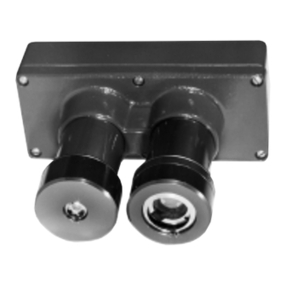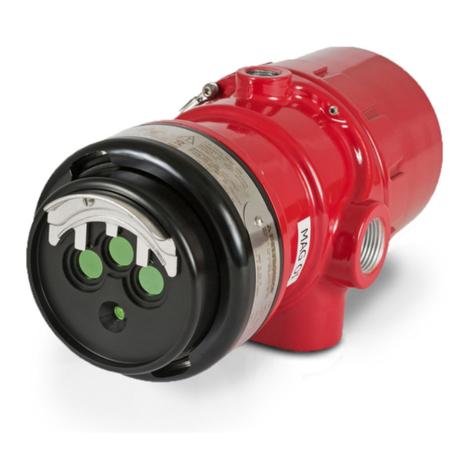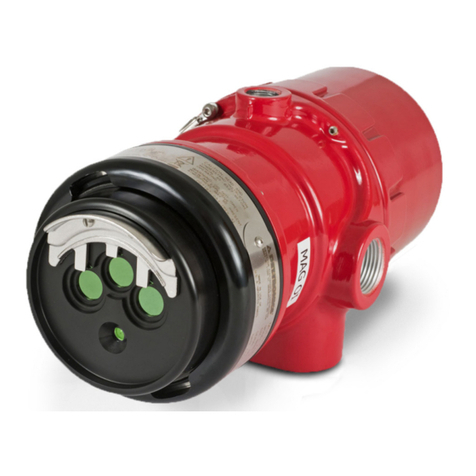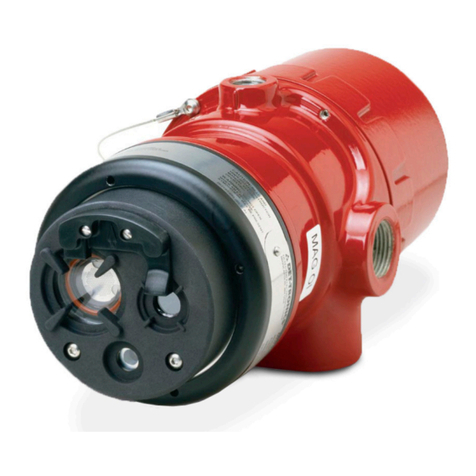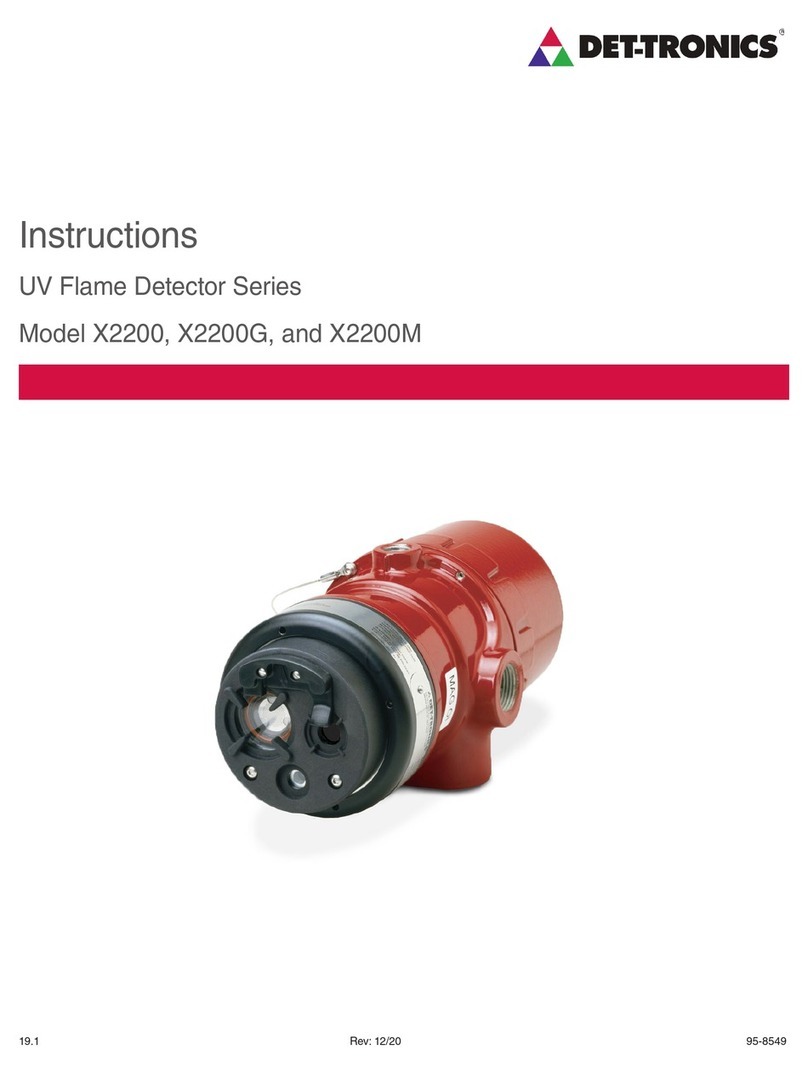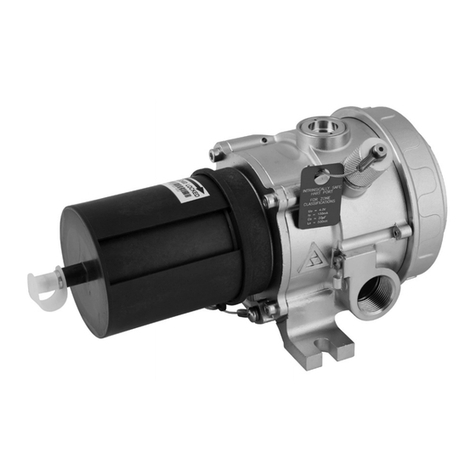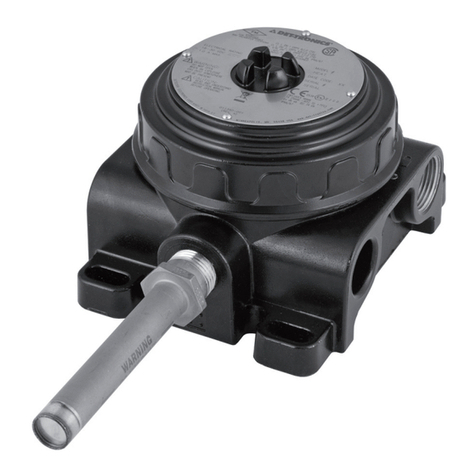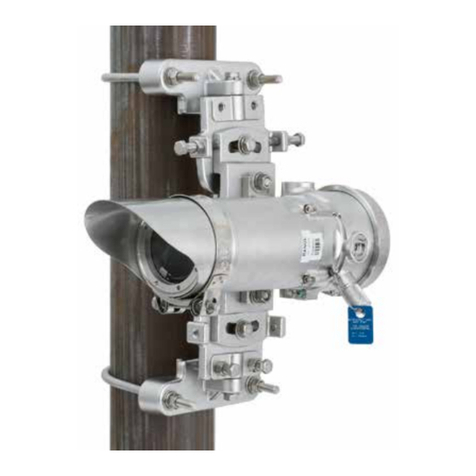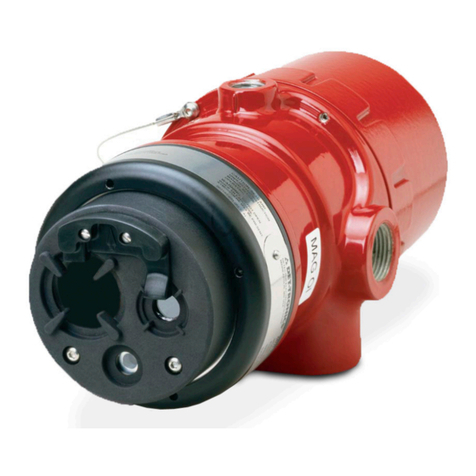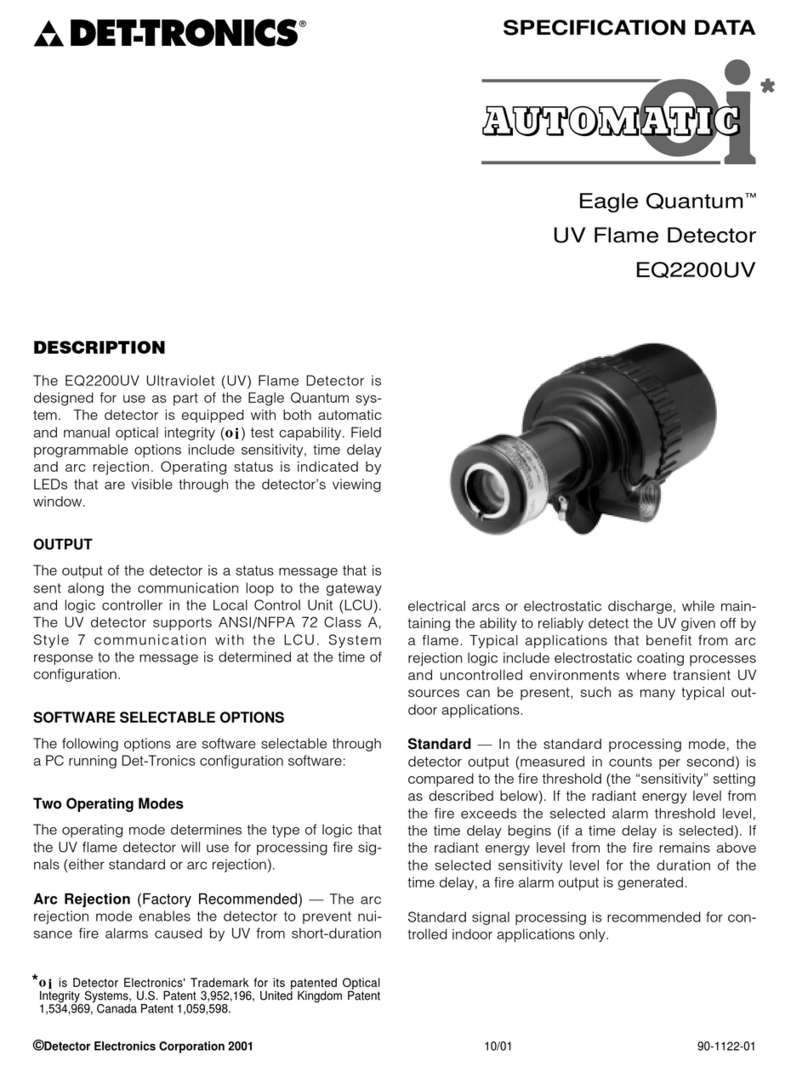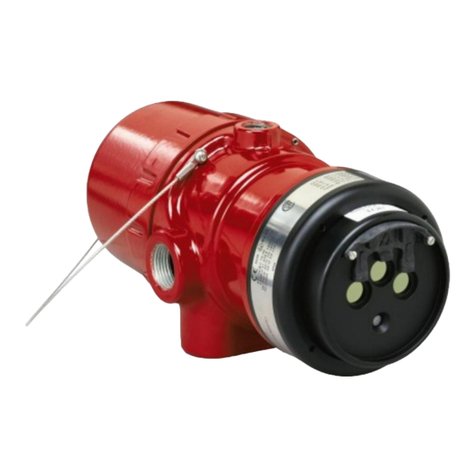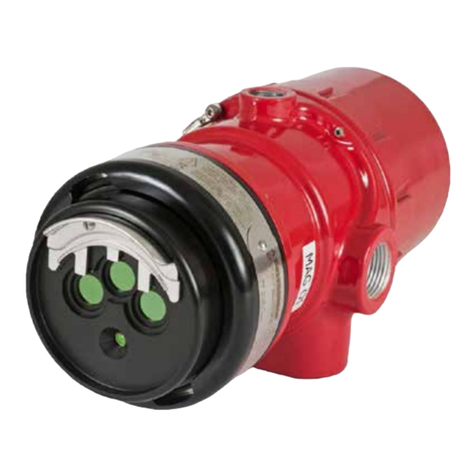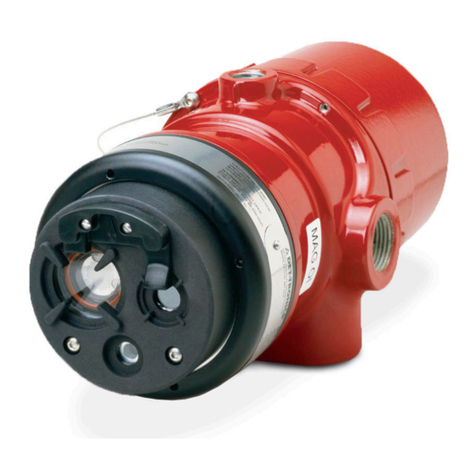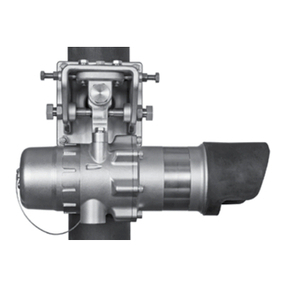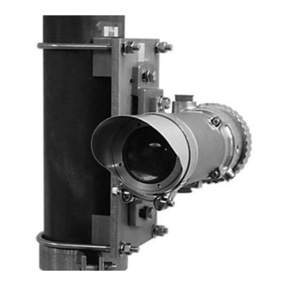
7.1 2 95-8242
Solid Materials
— Munitions production such as illuminating flare
material, TNT, and other propellants
— Powder coating booths
Other Processes
— Paint Spray booths
— Chemical and Petrochemical production
Information on these and a wide variety of applications is
available from Detector Electronics.
FEATURES
•Instantaneousresponsetoultravioletradiation.
•Detectors operate under adverse weather conditions
such as wind, rain, snow, high humidity, and extremes
of temperature or pressure.
•AutomaticOpticalIntegrity.
•Adjustablesensitivityandtimedelay.
•Allautomatictestfunctionsperformedwiththesystem
on line.
•Manual oitest capability (in addition to Automatic oi
capability).
•Automaticfaultidentication.
•Individualzoneidenticationwitheightvotingoptions.
•Microprocessorcontrol.
•Latching ZONE LEDs identify the zone responding to
fire.
•Output circuits can be made latching or non-latching
througheldadjustment.
•Individualdetectoroutput(countrate)canbemeasured
and observed on the digital display.
•DigitaldisplayofbackgroundUVsignalsinTestmode.
•Digital display signal output available at eld wiring
terminals for interfacing with computers or other
equipment.
•Detector is Factory Mutual (FM) approved, Canadian
StandardsAssociation(CSA)certied,andBASEEFA/
CENELEC certified.
GENERAL APPLICATION
INFORMATION
In applying any type of sensing device as a fire detector,
it is important to know of any conditions that may prevent
the device from responding to a fire, and also to know
what other sources besides fire will cause the device
to respond. A UV detector is useful in fire protection
applications because it will provide very fast response to
the presence of ultraviolet radiation emitted by a flame.
In addition, it is not affected by environmental conditions
such as wind, rain, or extremes of temperature and
pressure. The Det-Tronics UV system is also insensitive
to the ultraviolet component of solar radiation.
Considering the above, it can be seen that there are fire
detection applications where only ultraviolet sensors are
suitable. However, success in using an ultraviolet detector
is dependent not only on knowing its advantages, but
also its limitations. It is important to note that electric
arc welding is a source of intense ultraviolet radiation,
and care must be taken to ensure that arc welding is not
performed in protected areas without securing the system.
In addition, UV detectors should not be positioned so that
their cone of vision can scan the horizon. Rather, they
should be directed down over the designated hazardous
area to reduce the likelihood of picking up UV radiation
from distant sources.
An important fact regarding radiation detectors of any
type is that the radiation must reach the detectors in
order for them to respond. Care must be taken to keep
obstructions out of the line of view. For an ultraviolet
detector, this means that ultraviolet absorbing gases
or vapors as well as physical obstructions must not be
allowed to come between the detector and the protected
hazard. Smoke will absorb ultraviolet radiation, and
if accumulations of dense smoke can be expected to
precede the presence of flame, then UV detectors that
are used in enclosed areas should be mounted on the wall
approximately 3 feet (1 meter) from the ceiling where the
accumulation of smoke is reduced. Glass and plexiglass
windows also significantly attenuate UV radiation and
must not be located between the detector and a potential
flame source. If the window cannot be eliminated or the
detector location changed, contact Detector Electronics
for recommendations regarding window materials that will
not attenuate UV radiation.
It must be noted that malfunctions can occur in any type
of equipment, and although Det-Tronics systems are
subjectedtorigoroustestsbeforeshipment,nowayhas
yet been found to guarantee that every device will always
operate perfectly. The highest reliability with regard to
response to a fire is achieved when a hazardous area is
supervised by more than one detector, and when each
detector can independently register an alarm.
